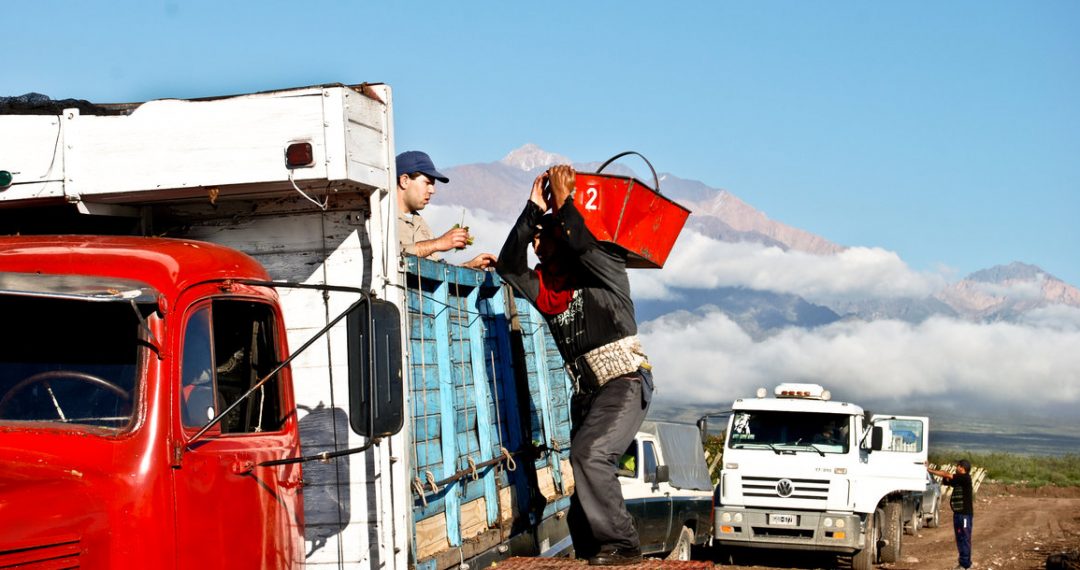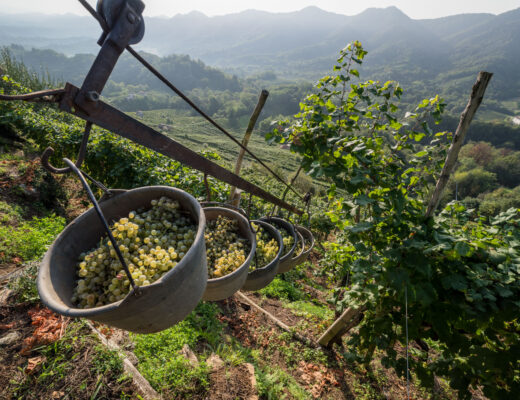When I first started tasting Argentinian Malbec many moons ago, jammy was a description that oft crossed my lips. Their soft, rounded acidity, plush texture, and velvety tannins more closely resembled Californian Zinfandel than any French iteration of the grape I had ever tried.
But change was already afoot. Ambitious winemakers were leaving the sundrenched flatlands east of Mendoza in favour of cooler, higher altitude climes. And thus, the Uco Valley, once considered too far from the city to warrant major interest, became Mendoza’s fine wine haven.
The Uco Valley twists and turns around the Tunuyan river and its tributaries. It follows a north-south orientation for 115 kilometres. The towering Andes Cordillera (mountain range) form its western border. To the east, lie a series of lower elevation mountains, still rising well above 1,000 metres.
The valley is roughly organized around its three municipalities: Tupungato, Tunuyan, and San Carlos. Highly prized vineyard sites are dotted throughout the area, each with their distinctive attributes. For the Lurton family, it was the gravelly soils in the Andean foothills west of Tunuyan that drew their gaze, establishing their estate here in 1996.
Perched at 1,100 metres altitude, Los Chacayes has an extreme, desert-like climate with warm summers and cold, snowy winters. The hot, dry Zonda wind regularly buffets the area and hail is a common hazard.

Photo credit: François Lurton Chacayes Vineyard, Bodega Piedra Negra
The site’s high elevation brings two of its defining features: marked diurnal variation and increased sunlight intensity. Day time highs in the summer regularly surpass 30°C, however at nightfall the temperature plummets, reaching lows of 10 – 12°C on average. This, coupled with high UV levels, allows for optimal day time photosynthesis, with an abrupt slowdown at days’ end, preserving high natural acidity.
The high solar radiation also results in increased polyphenol production. The grapes produce thicker skins to protect themselves against the hot sun. Thus, grapes grown here produce more deeply coloured, tannic wines.
The Lurtons selected two plots of land and set about planting variations of the Malbec grape. They decided to grow both traditional Argentinian Malbec clones, and a clonal selection of French Côt. According to Lurton, the Côt is “slightly more tense and austere… it brings freshness” and a nervy tension to the more fruit-forward, open-knit Argentinian Malbec.
The vineyards were planted at an impressive density of 20,000 vines/ hectare (double that traditionally used in high density French vineyards like Bordeaux or Burgundy). This, coupled with nutrient-poor soils and a generally dry climate, all combine to stress the vines. Yields are low, at roughly two bunches per vine, allowing for early ripening of intensely concentrated, flavourful grapes.
This week, I had the pleasure of sitting down to a vertical of six François Lurton Chacayes vintages. Produced in certified organic vineyards, the wines are vinified with indigenous yeasts, in a mix of new French oak barrels and concrete eggs, with an emphasis on long, gentle extraction.
One of the hallmarks across each vintage was the wines’ soaring acidities. It comes in stark contrast to their dense, weighty frames, and ripe fruit flavours. While each vintage is marked by its weather patterns, a bookending of lively acidity and refreshing, slightly bitter tannins was common.
Dating back to the 2002 vintage, the tasting amply displayed the range’s powerful, ageworthy nature. These are not wallflowers, but rather commanding, powerhouse wines that demand a decanter and hearty food pairing to show their best.
François Lurton Chacayes, Bodega Piedra Negra, IG Los Chacayes, Uco Valley

François Lurton Chacayes 2002
The 2002 vintage saw a good deal of humidity and marked temperature swings from day to night. The winery team considers this, their first vintage with exclusively estate-grown fruit, to be “one of the greatest vintages of Chacayes”.
Developed notes of prune, truffle, and dried leaves mingle with heady baked plum and allspice on the nose. Full-bodied and still wonderfully fresh, the palate displays a broad, supple structure, with dried dark fruit and savoury flavours. Drying on the finish. Drink now with hearty, earthy fare. 91pts.
François Lurton Chacayes 2003
After the deluge, the drought. The wet 2002 growing season was followed by one of the driest summers on record. Thankfully, optimal conditions throughout the autumn saved the harvest, though yields were low.
Remarkably youthful aromas of stewed red and black fruit overlay notes of milk chocolate, nutmeg, and sandalwood on the nose. The palate is a study in contrasts; fleshy and ample, yet brisk with tart red berry flavours. Firm, structuring tannins frame the dark chocolate, cedar nuanced finish. 90pts.
François Lurton Chacayes 2007
Dramatic shifts in seasonal weather patterns and the regular menace of summer storms made 2007 a nail-biter of a vintage. Despite this, the wines show particular elegance.
A fragrant medley of blueberry jam, violets, cocoa, and licorice plays across the nose and palate. This weighty Malbec, with its vibrant acidity, dense core, and fine-grained tannins, is the definition of an iron fist in a velvet glove. Attractive bitter hints provide lovely freshness on the finish. 95pts.
François Lurton Chacayes 2008
The 2008 harvest took place two weeks later than usual due to cooler-than-average temperatures, heavy cloud cover, and regular rainfall.
A dark fruit scented nose of cassis and plum, with intriguing undertones of hoisin sauce and cigar box. The palate is dense and spice-laden, with juicy fruit flavours, and ripe, chalky tannins. Warming cinnamon spice notes linger on the persistent finish. 93pts.
François Lurton Chacayes 2015
An El Niño vintage, marked by cool, rainy weather giving very pure, aromatic wines with a taut, high acid profile.
A floral, perfumed wine with youthful notes of crushed black cherries and berries, and peppery nuances upon aeration. The palate is brisk and tightly knit with a concentrated core of dark chocolate and ripe dark fruits, lifted by refreshing eucalyptus undertones. Muscular, somewhat astringent tannins, define the toasty, spiced finish. Needs three to five years further cellaring to soften and integrate. 92pts.
François Lurton Chacayes 2017
The 2017 crop was picked early to preserve balanced freshness after an exceptionally warm, dry growing season. This low yielding vintage “brought great concentration” according to the estate.
The nose is a heady array of plum jam, exotic spice, wildflowers, and mocha, lifted by hints of orange peel. This same generous yet lifted character plays across the palate, tapering to ripe, sinewy tannins. Finishes long with layers of spice, sweet dark fruit, dark chocolate, and sweet tobacco. 94pts.
*** This François Lurton Chacayes article was originally written for Good Food Revolution. Want to learn more about artisanal food, wine, beer and spirits.? Check out their excellent website. ***





No Comments